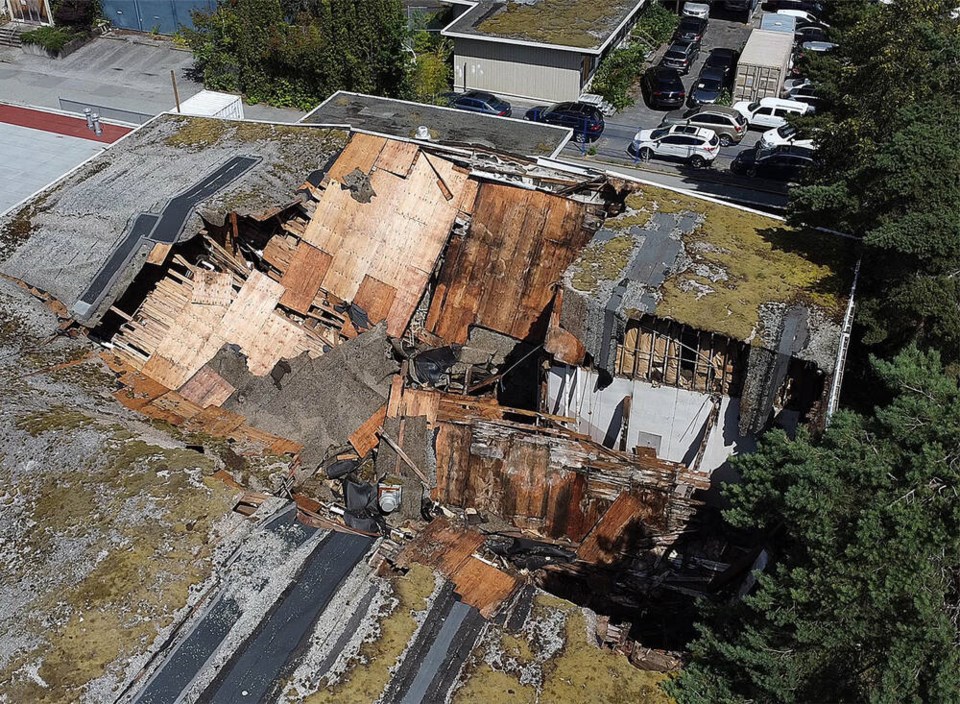After the roof of the North Vancouver School District’s Lucas Centre gym caved in last month, there is consensus among Hamilton Heights neighbours over what should have happened with the property: Not this.
It has been more than a dozen years since the building was last used for educational purposes.
A decade ago, the school board considered selling and redeveloping some or most of the land, but that plan never went anywhere. Instead, most of the Lucas Centre building has been used for storage of dust and asbestos.
Unfortunately, what happened with the Lucas Centre is part of a trend in local governments and school districts. When an aging asset is no longer usable or needed, and they don’t feel like paying for the demolition, they have another solution in mind – let it rot.
West Vancouver did it with Klee Wyck and the Ambleside Youth Centre. The North Van school district did it with Ridgeway Annex.
These decaying buildings attract nuisances, pests and trespassers. They are a blight on their neighbourhoods and a risk to their neighbours.
But more than that, they are a shameful waste of public space.
We don’t know today what the best answer is for the reuse of the Lucas Centre lands, but even an empty field would have been better than keeping the original building standing.
We also don’t know much money the school district saved 12 years ago by putting off demolition. We’d bet it is costing them a whole lot more now.
What are your thoughts? Send us a letter via email by clicking here or post a comment below.



